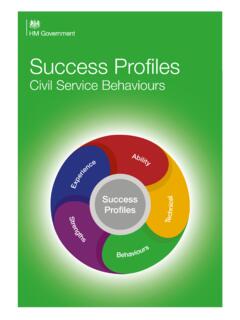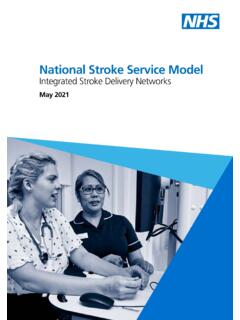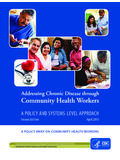Transcription of Engaging Young People who Offend - GOV.UK
1 Engaging Young People who Offend Source document Author: Paul Mason and David Prior, University of Birmingham YJB 2008. Acknowledgments The authors would like to acknowledge Nathan Hughes at the University of Birmingham for his contribution to the development of this review, particularly in the early stages. We would also like to thank James McGuire, University of Liverpool, for his helpful comments on early drafts and in guiding the scope of the review. Thanks are also due to Miranda Wilkinson and Nisha Patel at the Youth Justice Board for England and Wales (YJB) for their comments and assistance in producing this final draft, including through the peer review process. Finally, we would like to thank our colleagues Gill Kelly and Bernadette Wilkinson of KWP Consultancy and Training and Dave Callaghan of Youth Justice services who have commented on early drafts, provided support and guidance, and produced the Key Elements of effective Practice that accompanies this source document.
2 Engaging Young People who Offend 2. Contents Acknowledgments 2. Glossary 5. Background 7. Introduction 8. General findings 10. effective interventions an overview of the evidence 10. Engagement for effective outcomes 12. Assessment 13. Assessment as the foundation of engagement 13. Engagement within assessment 14. Individual needs 17. The importance of individually tailored interventions 17. Individually tailored interventions within a holistic approach 20. Communication 22. Relationships for change: messages from the working alliance with adult offenders and in mental health practice 22. The practitioner/ Young person relationship: messages from practice 24. Youth work techniques and approaches: messages from youth work practice 31. Communication for multi-agency working 33. Service delivery 35. The importance of relationships within service delivery : research evidence 35. Case-management: Engaging Young People who Offend within and across interventions 43.
3 Transitions 45. Transition as a period of vulnerability: case management and co-ordination 45. Training 47. Communication and practice skills 47. Management 49. Management for engagement practice 49. Management for holistic provision 49. Service development 50. effective interventions 50. Holistic programmes 50. Monitoring and evaluation 52. Engaging Young People who Offend 3. Conclusions and recommendations 54. Appendix A: method 56. References 60. Engaging Young People who Offend 4. Glossary Asset A structured assessment tool used by youth offending teams (YOTs) in England and Wales on all Young offenders who come into contact with the criminal justice system. It aims to look at the Young person's offence(s) and identify a multitude of factors or circumstances ranging from lack of educational attainment to mental health problems which may contribute to such behaviour. It also measures changes in needs and risk of reoffending over time. Case management Case management is similar to casework, but builds upon that approach to include partnership and multi-agency working, and the co-ordination of a programme of support as an integral aspect.
4 Case management involves casework, in that the relationship between a case manager and client is not a purely bureaucratic or functional one but remains one that entails one-on-one supervision and support; yet, case management moves beyond this support to include the identification and co-ordination of services and interventions and responsibility for the monitoring of these against the achievement of outcomes and indicators of change. Casework Casework is commonly understood as a social work approach, where an individual professional works closely with an individual client. Within this approach a caseworker provides direct support, services and advocacy as well as brokering services from others as an addition to the primary casework focus. Cognitive behavioural therapy (CBT). This is a relatively new intervention type, which has arisen from advances in our understanding about the role of internal cognition in the expression of external behaviours.
5 CBT is based on the idea that cognition affects behaviour, and that individuals have the capacity to be aware of and adapt their ways of thinking, which can lead them to change their behaviour. Holistic A holistic approach is one that considers the Young offender and their circumstances and background as a whole rather than as a set of unrelated and separate elements. Intervention An intervention in the context of this document is a structured service or series of actions that aims to achieve change over time. It is focused upon a single issue or set of closely related issues, for example education or substance misuse. It is not a programme' (see below). Multi-systematic therapy (MST). MST is an intensive family- and community-based intervention designed to make positive changes in the various social systems (home, school, community, peer relations) that contribute to serious anti-social behaviour of children and Young People . It is a flexible, individualised intervention and MST practioners offer 24-hour support to Engaging Young People who Offend 5.
6 The families they work with. It uses evidence-based, solution-focused interventions, such as strategic family therapy and cognitive behavioural therapy. Multi-modal approach A multi-modal approach is one that identifies different strengths and different needs, and uses different and appropriate means for addressing them. Programme A programme in the context of this document is a structured set, or programme, of interventions that aims to address a range of issues over time and across which progress is supervised and reviewed. Engaging Young People who Offend 6. Background This review was commissioned to serve as a background source document to accompany guidance produced by the Youth Justice Board for England and Wales (YJB), identifying key elements of effective practice in interventions in the youth justice context. It has not been written primarily for an academic or research audience, but for managers and practitioners working in the youth justice field who are directly involved in providing, or brokering access to, services for Young People who Offend and their families.
7 The review offers an accessible guide to the current state of the evidence base on effective interventions and services , helping youth justice practitioners and managers to be aware of and deliver more rigorously evidence-based services . The review document is divided into chapters structured around a number of key themes or headings relevant to practice in youth justice services . The source document is structured to mirror the Key Elements of effective Practice to facilitate cross-referencing between the two documents, and to ensure it is a useful document for the intended audience who may wish to explore the areas covered in the Key Elements of effective Practice summary in more depth. These nine common chapters therefore reflect what are considered to be core areas of consideration for practice and management within youth justice, and as such this structure is largely consistent across all 10 documents in this series of publications. The following Key Elements of effective Practice titles and corresponding source documents are available from the YJB website ( ): Accommodation Assessment, Planning Interventions and Supervision Education, Training and Employment Engaging Young People who Offend Mental Health Offending Behaviour Programmes Parenting Restorative Justice Substance Misuse Young People who Sexually Abuse.
8 Engaging Young People who Offend 7. Introduction The focus of this review is effective techniques for Engaging Young People who Offend , although it also considers Young People at risk of offending. The early work for this review indicated that there is a paucity of research that focuses upon effective techniques for Engaging both these groups of Young People . Continued searching of the literature, use of multiple and varied search terms, and exploration of databases around particular themes failed to uncover a useful mass of studies upon which robust conclusions could be drawn. Notes on the process undertaken and developed are included in the Appendix; suffice to say, we found that although there is a growing body of research that focuses upon interventions, there is rarely detailed consideration of the techniques for Engaging Young People that are employed within them. As the review developed, it was agreed by the research team and the YJB that the most recent research in relation to effective interventions was being explored by other Key Elements of effective Practice source document reviews commissioned 2006 07 and that in order to include this material, this review should include evidence of effective techniques that those reviews of interventions establish.
9 Our approach enabled this source document to draw on the most up-to-date evidence across interventions without requiring an additional systematic review of each area of practice to be undertaken. It was also agreed that this source document would benefit from an exploration of practice literature from the areas of social work, probation and youth justice, and youth work so that relevant messages from this body of work, often rooted in evidence of good or emerging practice if not research and evaluation, could be included. Thus, this review moved away from the systematic review' model to draw on three sources: A systematic review of research highlighting effective techniques for Engaging Young People who Offend . The systematic and literature reviews undertaken to produce Key Elements of effective Practice source documents for the YJB during 2007 ( effective practice reviews'). Messages from practice literature, which we characterise as a body of knowledge that is not evidence-based' in the sense that it is supported by rigorous research evaluations but that is both consistent with what we know about Young People who Offend from research, and supported by theoretical (psychological, social, cultural).
10 Understandings of how Young People (and adults) can be engaged and relationships developed and sustained. The practice literature is also often illustrated with examples drawn from research, such as extracts from ethnographic studies or quotations from practitioners and Young People . Since the factors that can support the development of such effective techniques emerge as generic, the practice literature that we draw on is not limited to the context of youth offending and we have therefore examined practice texts from the fields of social work, probation and youth justice, and youth work. Throughout the source document we are careful to identify the origin of the evidence or messages presented. We do not consider in detail material from the Key Elements of Engaging Young People who Offend 8. effective Practice source documents, but we refer to it and indicate where it is relevant so that further detail can be sought by the reader where required.

















